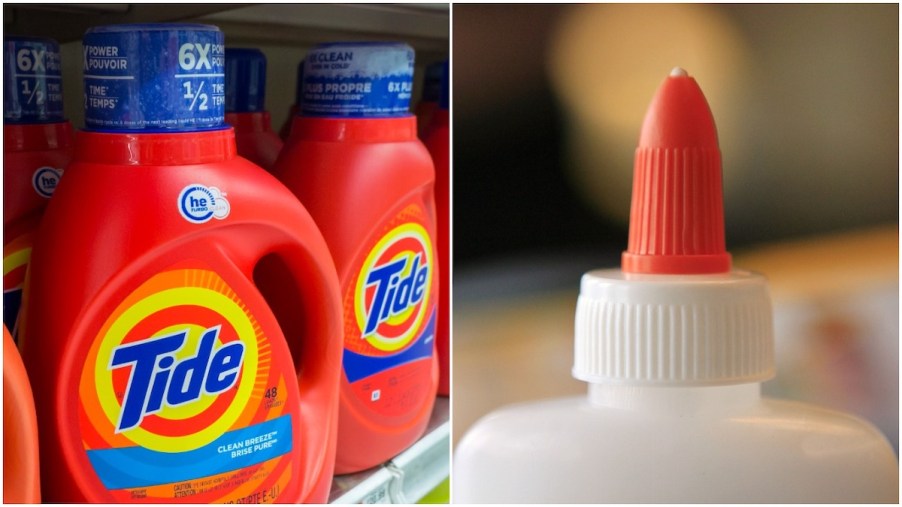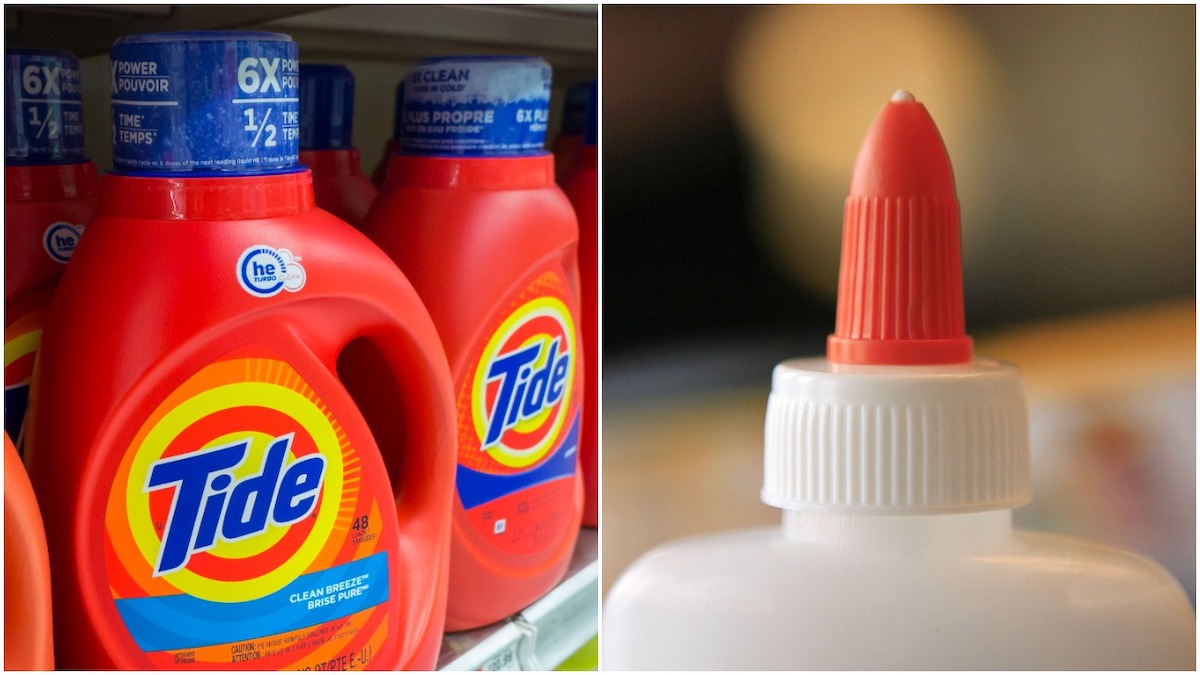
1 TikTok Car Cleaning Hack Could Ruin Your Interior
We live in a life-hack culture. And some helpful videos online show smart ways to clean and maintain our cars. However, one recent car-cleaning hack on TikTok could pose a problem.
This car-cleaning hack might be worth avoiding. Though it might be a fun and easy way to clean the nooks and crannies of your car’s cockpit, you also risk damaging fibers and surfaces. Before you try this DIY car-cleaning trick, heed these warnings.
The TikTok car cleaning hack you should probably avoid

The tip requires clear Elmer’s glue and liquid Tide detergent. TikTok users Fer and Mau suggest blending a couple of tablespoons of each in your car’s cup holder. The mixture will eventually turn into a quasi-solid, mushy blob. Then, roll or stretch the gummy lump over the various surfaces of your car’s interior, including the dashboard, console, steering wheel, and door panels.
The TikTokers tout the Elmer’s-Tide goo’s ability to collect dust, dirt, and grime. And what makes it a so-called car hack is how easy it is to get into those hard-to-reach corners and crevices that traditional towels and rags can’t reach.
Unfortunately, the concoction could end up doing more harm than good.
Why is this cleaning hack a bad idea?
Understanding cleaning products and the surfaces they’re intended to clean means getting a little scientific. The pH characteristics of a cleaning product matter, especially when it comes to alkalinity.
As Cleanfax points out, some protein fibers, like silk or wool, can tolerate mild acids. Cellulose can tolerate some alkaline. But too many alkalis and acids will destroy certain fibers. And if it doesn’t ruin the fiber itself, it can have nasty effects on any dyes or colorings in those fibers.
Translation? The ingredients in Tide and Elmer’s glue could damage your car’s interior. And it’s not just Tide. Most laundry detergents are alkaline-based and capable of dissolving finishes in your vehicle if not properly diluted.
And, in general, it’s best to avoid using any bleach products, furniture cleaners, waxes, or silicone-based products on leather surfaces.
What products are safe for car interiors?
First, it’s best to keep a selection of cloths and wipes that are safe for leathers, plastics, and other interior components, Protect My Car explains. They include a microfiber cloth, cotton cloth, Lysol wipes, and leather cleaning wipes. Plus, cleaning and spraying your car’s cabin air filter with a little disinfectant can help reduce the dust and debris blowing into your vehicle.
When it comes to cleaning your steering wheel — which is a good idea because How Stuff Works says the wheel is more than six times filthier than the average mobile phone screen — stick with Lysol wipes. Removing stains might require a little elbow grease and a lot of patience. But you can also mix lemon juice with cream of tartar for tough spots if you still need a car hack.
Other safe and reliable cleaning products include distilled water, Castile soap, and liquid dishwashing soaps. For more sensitive surfaces, like leather and suede, it’s best to use specialized conditioners and cleaners to keep a clean, soft, and supple look and feel. There are also high-quality cleaning gels designed for a car’s sensitive surfaces.
Sure, maintaining your vehicle’s interior might seem easier with the occasional car-cleaning hack. But be mindful of the chemicals you use; otherwise, you could ruin your car’s interior.


